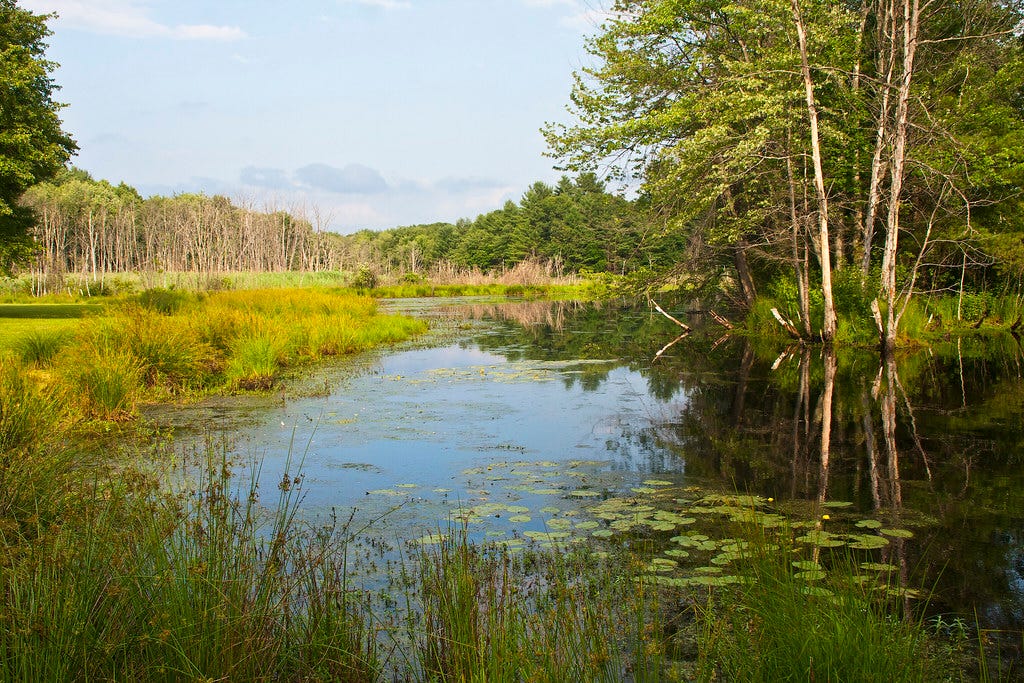Imagine how it must feel to be that person in a group of Wu Tang Clan fans who talks up Ghostface Killah when everyone else is gushing about GZA, RZA, or Method Man. Or the kid at a penny candy counter who proudly orders a fistful of Necco wafers, as the other customers go for brighter and tangier gummies. Well, now you know how I feel when talking about wetlands. Because I really love wetlands. Somebody has to.
Next to the grand scale beauty of mountains, waterfalls, or old growth forests, a vast squelchy wetland can be an acquired taste. And during the summer, a lot of us tend to avoid wetlands on the assumption that they’ll be smelly and full of biting insects. In some cases, this is true. But what’s highly underappreciated about wetlands is that in addition to giving reedy plants, birds, and bugs a reliable place to call home, wetlands are also veritable Cool Zones at the hottest times of the year. A wetland is basically a thick stew of botanical specimens, and a lot of wetlands are able to absorb heat from the sun and re-release a milder version of it. Consider the city of Colombo, Sri Lanka. At the most sweltering hours, the neighboring wetlands around the city are, on average, about 10°C cooler than the pavement-heavy areas in the city. A similar thing has happened in London during heat waves, with locals flocking to the Hackney Marshes to cool off.



